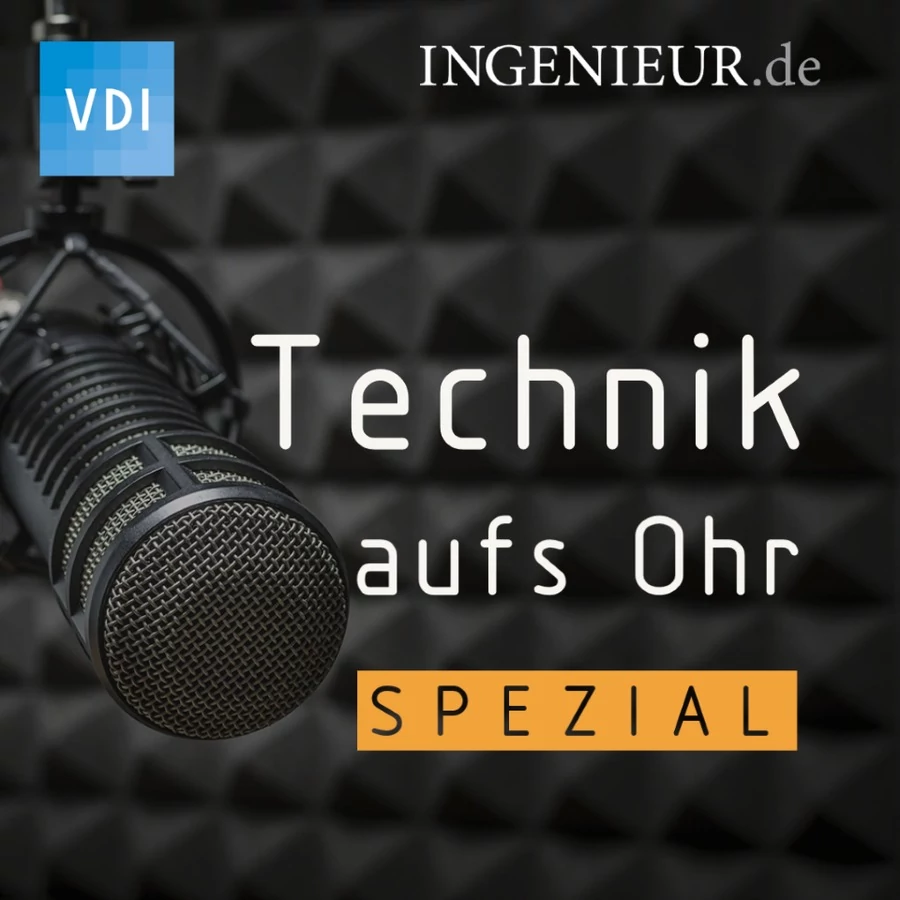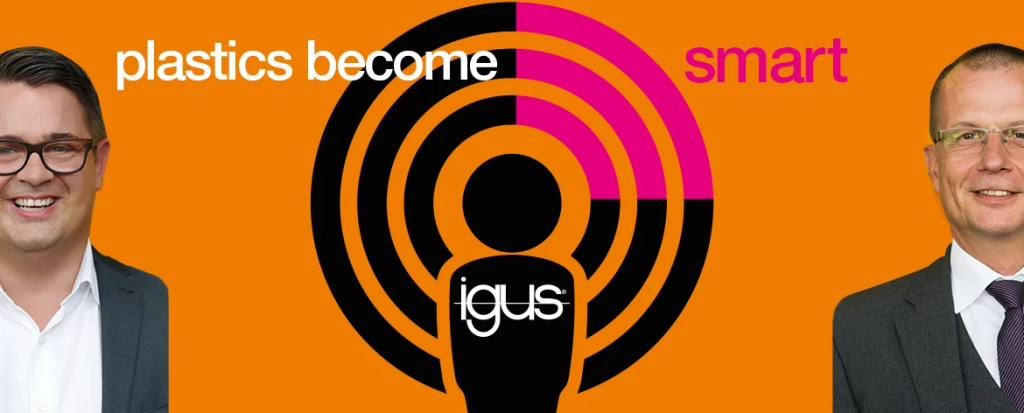Behind the scenes … All about the VDI Podcast – “Technik aufs Ohr” (Technology on the ear) with smart plastics
Richard Habering | 12. October 2021
After our appearance at the Smart Factory Summit last week, we had our next premiere this week: as guest experts on the VDI podcast, “Technik aufs Ohr” (Technology on the Ear). Together with my colleague Andreas Dengler, Industry Manager Automotive Factories at igus, we spent an entertaining half hour talking about the exciting world of smart plastics in automotive factories. But it is best to listen to it for yourself:
https://technikaufsohr.podigee.io/72-smart-plastics-igus

You can also find the podcast on Apple Podcasts and on Spotify. When it is not about igus, the podcast series talks about topics of everyday engineering life – be it the mobility of the future, environmental and sustainability aspects, artificial intelligence or the next step on the career ladder. Every Thursday, every two weeks, a new episode will be released. Sarah and Marco, the VDI hosts, talk to experts, company representatives, engineers and career coaches about topics that move society and should help them in their everyday professional lives.
In our case, I can absolutely confirm that even though we are absolutely in a niche market with the smart plastics from igus, the joint discussion with the two moderators from the VDI was absolutely entertaining and you could sense the enthusiasm for technology and the interest in really understanding things. This first podcast recording was really fun and definitely won’t be the last time for me.

And for those who prefer reading to listening, here is a short written summary of what was said:
What do we mean by smart plastics?
The smart plastics are intelligent components such as energy chain systems, chainflex cables and plastic plain bearings that are equipped with connectivity and sensor technology. Their goal is to make complex automation solutions compatible with Industry 4.0. In the future, these will not be able to get by without a digitalisation concept overarching all industries. The smart plastics offer two ways to approach the topic. The simple way to smart energy supply or plain bearing technology is condition monitoring, which offers simple integration with the highest levels of safety. If you want to completely network the machines in your production plant with the Internet of Things (IoT) in order to be Industry 4.0-capable and optimise your maintenance, predictive maintenance is exactly what you need.
Predictive maintenance is a key competence in Industry 4.0. How does the monitoring of machines actually work? Sensors and a communication module are involved. Can you explain this in more detail?
Condition monitoring is the fastest and simplest way to combine many igus products to form a self-monitoring smart plastics product. Sensors are mounted to measure values, such as temperature, forces and vibrations within pre-defined limits. Values outside the limits result in an alert or a notification. Based on this information, a decision can be made about the next steps, maintenance or shutdown. Values outside defined limits can directly trigger a system shut-down in order to prevent damage that is expensive to repair. At igus, we use the term “i.Sense” (in the sense of “I feel”) to refer to condition monitoring. It is the smart networking of individual components that creates the solid foundation for predictive maintenance concepts. At igus, we call our predictive maintenance system i.Cee .
Smart plastics are particularly effective in the highly automated production of automobiles. To what extent can costs be reduced through reduced maintenance? Do you have a case or figures for us here?
On average, an engine comes off the assembly line every 14 seconds – in peak periods and more than 6,000 engines are produced every working day. This output can only be achieved with reliable components and a high degree of automation. Companies therefore rely on smart plastics to avoid unforeseen failures and machine shutdowns.
▲ Tech up
- Extension of the maximum service life
- Increase in overall system efficiency
- Integration into Industry 4.0/IIoT concepts
▼ Cost down
- Reduce maintenance costs through early warnings
- Eliminate unplanned downtime
- Decrease storage costs
Since the automotive industry is rather secretive, here is an example from the steel industry: Through the use of intelligent solutions at Tata Steel Haldia India, a system with a travel distance of 480m and a chain length of 240m, could avoid expenses of up to € 40,000.
How does the data integration work?
The customer alone decides on the route & access of the data: data transfer within your local company network (i.Cee:local) or via the secured cloud (i.Cee:cloud). i.Cee:local: the data never leaves your company network, as the i.Cee software only communicates within the network of your choice. The spectrum ranges from an energy supply chain within a machine up to a machine park and its own output interface. i.Cee:cloud: with this internet-based solution, a distinction is made between sensors that transfer their data directly to the cloud, where it is made available in a protected area via a browser dashboard. With the second option, the data takes an intermediate stop via the i.Cee.net, a so-called data concentrator. The i.Cee.net is located at your site, so you can stop or adjust the data exchange to the cloud at any time.

